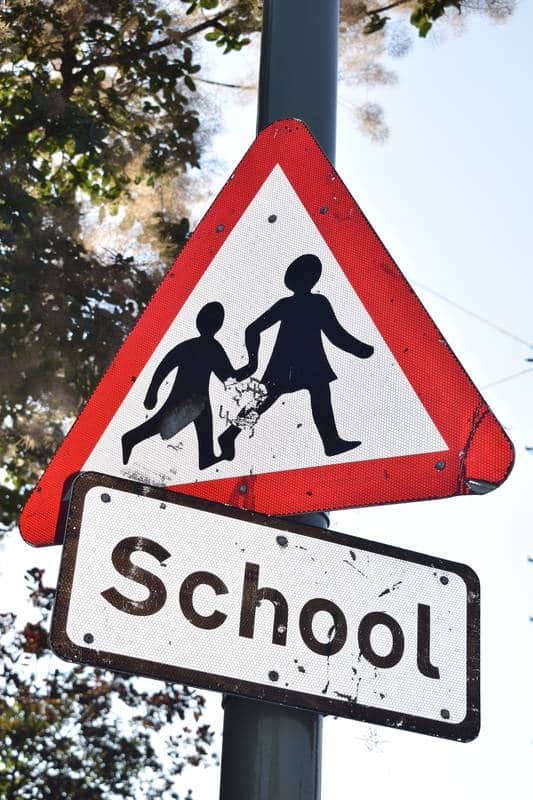School Subjects
Board & Administration
Teaching & Learning
Hands, Eyes, Feet: Good Posture and High Expectations
★★★★★
Paul Harrison,Rhoda Weber October 4, 2019If you expect your students to learn, you’ll need to enlist their hands, eyes, and feet. Rhoda demonstrates how she uses proper posture to keep her students’ attention, and calls each student to give the best.
I’ve learned a few different things over the years in just classroom management. One of the biggest things that I’ve learned was the thing with using good posture. My theory is that students—where their hands are is where their mind is. If their hands are folded on top of their desk, well, their hands aren’t distracted, and so their mind is with you and focused and their eyes are on you. The first year I taught their hands would be in their desks, tapping on their pencils, maybe rubbing the sides of their desks, and their mind is pretty much there. Their mind is with their pencil inside their desk or on the sides of their desk. They had a hard time focusing.
Since then, the second year, I changed that by… They always, whenever I’m teaching they need to have their eyes on me, their hands folded. And that’s really helped. They do forget during class time, but if they do forget I do put a mark on the board and that pretty much straightens them up pretty quick. Sometimes I give them a little reminder before I do that. Or else to help them remember to use good posture I pick out the ones who really are sitting well and I’m like, “Wow, so-and-so is sitting very well and so and so… That’s great,” and then suddenly all of them straighten up because they all want to be doing a good job, too.
Good. I see one, two people with good posture. You did it quickly.
Posture has been a very big thing in being able to focus and pay attention in class and they learned so much more.
And Brianna is sitting very well. I think she can do the last one. Which one does not belong?
I had a lot of problems sometimes with students just having little problems, little issues with each other. I hadn’t really focused on teaching them manners. This year I focus more on that and each week they have a new manner. For example, first they learn using please, then using thank you and building on that and more manners. It’s taking care of a lot of issues. There have been times where one student is like, oh, they don’t like this about the other student. And then I tell them, “Can you say, ‘Can you please stop doing it,’” or whatever. I direct them in how to use which manner. It’s minimized a lot of problems and so that’s been very helpful. It’s just very pleasant being with students who appreciate things, remember to say thank you, please, excuse me, things like that. I’ve really enjoyed seeing the change in that and using good manners.
Another thing I’ve learned is that it’s easy to teach school and it’s easy to teach your class and be trying to get through the work. There’s a lot to teach them in a short amount of time. It’s very easy to try to rush through the lesson and, “We really need to get this chart started.” “We need to get these words written down.” “We got to do this, we got to do that.” But [we need] to make sure that each student is doing it right. And sometimes there’s one who is off in their own world or not giving their 100% best.
I think it’s really good, towards the beginning of the year especially, getting right on that, that we need everybody in the class and if even it’s just one person not helping along, that we’ll all stop and redo it because we need every single person.
Practicing that more and more, soon they’ll know that they’re needed along with everybody else, and they’re just as important and if they’re going to learn they need to help out with things too. In the long run, it’s very worthwhile even if it makes your classes take longer. Oftentimes students give less than their best and they don’t even know what their best is, I don’t think.
We’re going to start off with counting by threes our octopuses up here. So, remember, counting by threes we skip every two numbers and count the third one. All right, all together:
“3, 6, 9, 12, 15, 18, 21, 24, 27,30, 33, 36.”
Good job. Let’s do it one more time. I need to hear your voices a little bit louder. Together:
“3, 6, 9, 12, 15, 18, 21, 24, 27,30, 33, 36.”
Way to go, that sounded great!
Setting the bar high and—instead of just being okay with, “Okay, at least we got through it”—instead, raising it higher and higher because they can become so, so much. It’s great to see how they can perform. It does take work, but it’s good to see that.
Grades:
Resource Type:
Related Items
Leave a Reply
Feedback
